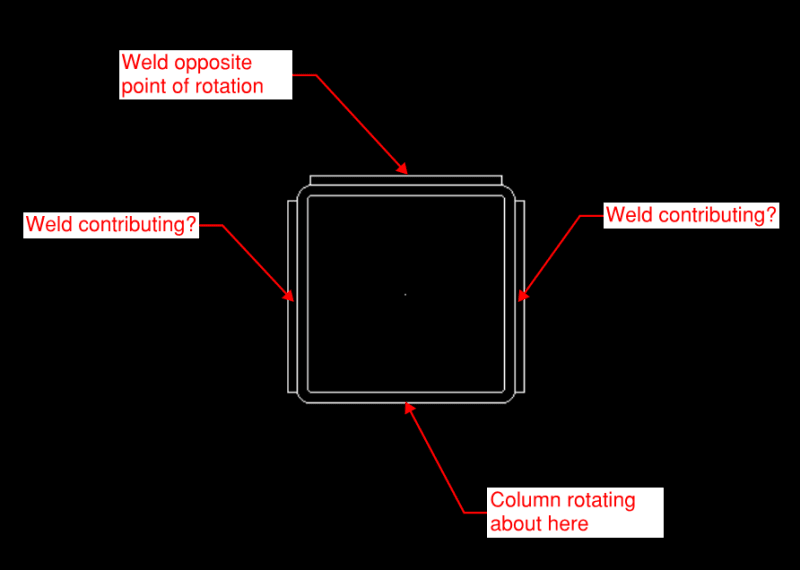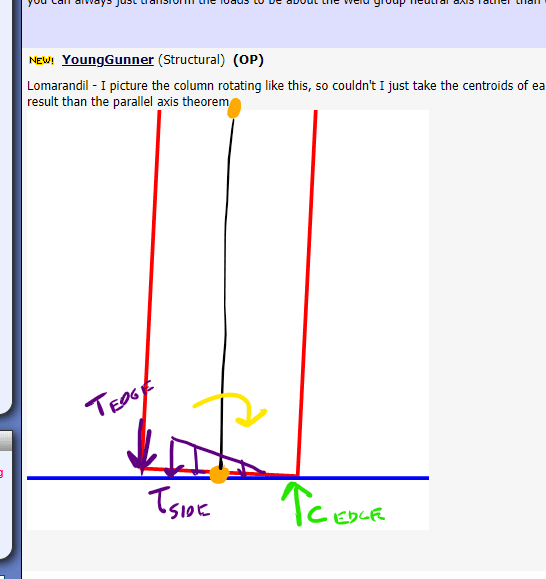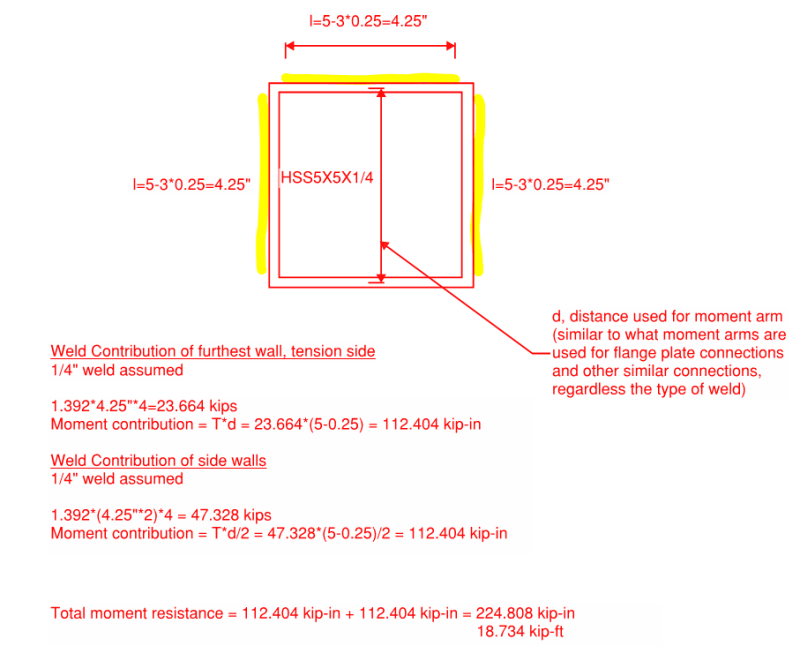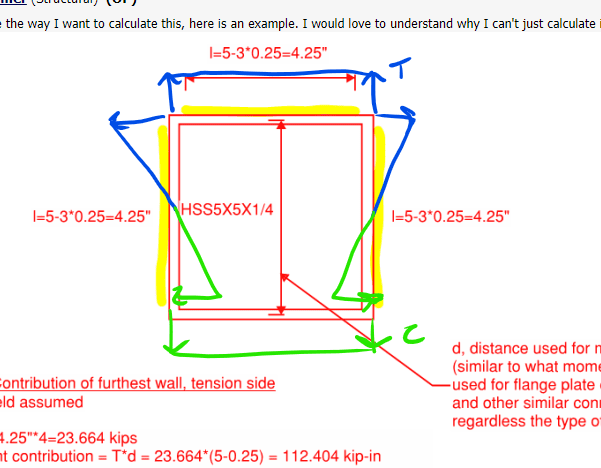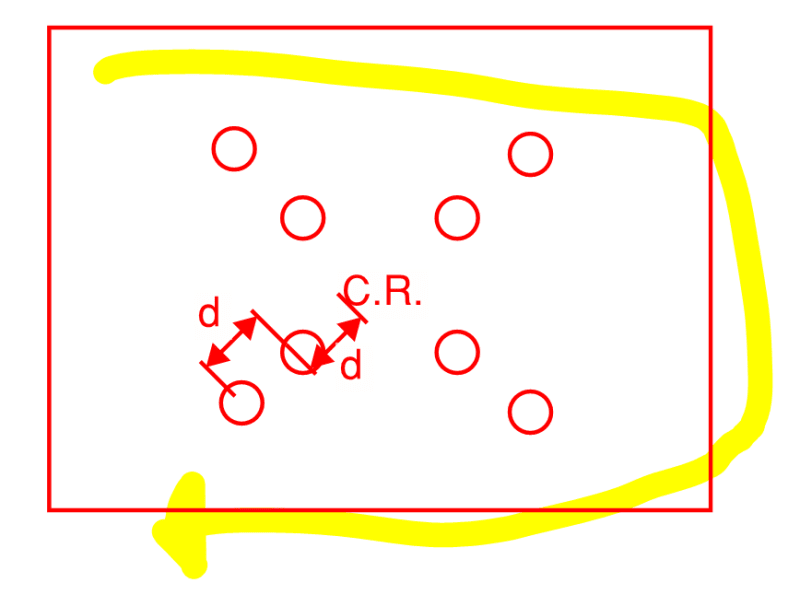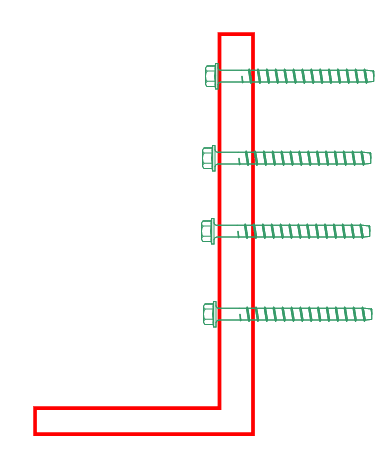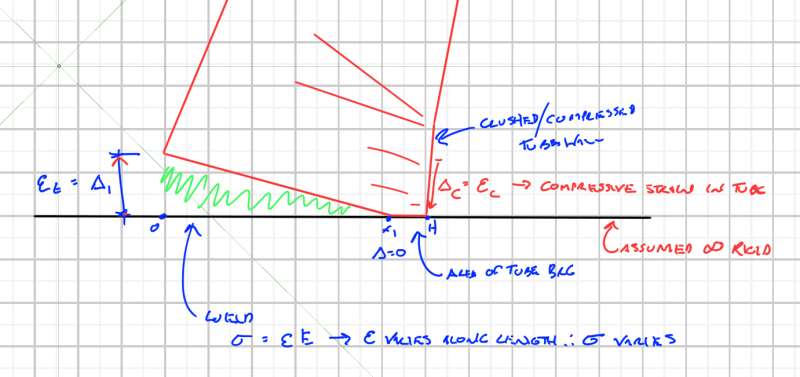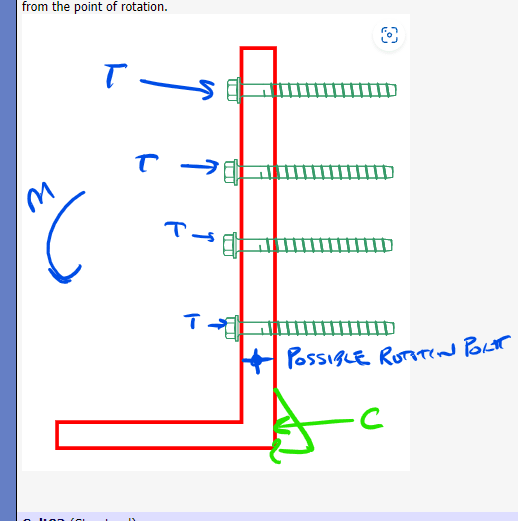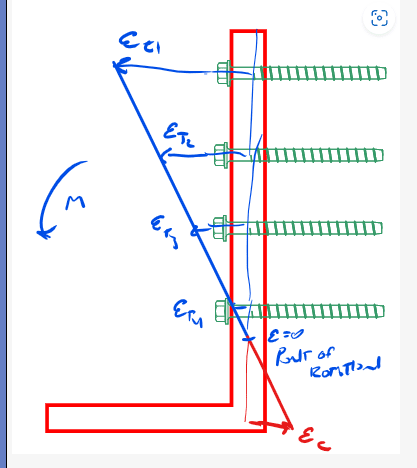YoungGunner
Structural
- Sep 8, 2020
- 98
In relation to steel HSS welded to a base plate resisting a moment, I've noticed that Risa Connection only considers the column wall opposite the point of rotation to be effective for the weld strength. I'm curious if anyone thinks we can consider the side wall welds as contributing in resisting the moment as well?
